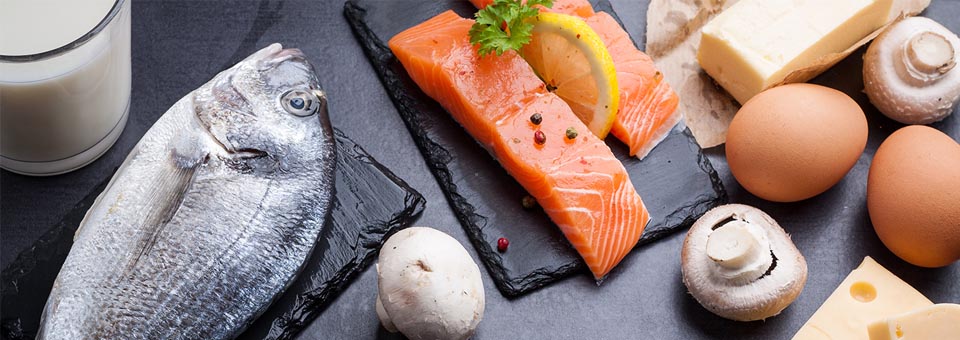Organized Medicine and Big Pharma have convinced almost the entire world that cholesterol is a deadly enemy that must be avoided at all costs…
And that if you have even slightly elevated levels you should be taking their cholesterol-lowering statin drugs.1
Then they tell you to avoid the sun and slather on sunblock every time you step outside.
This double whammy of wrong advice is deadly for your health… leaving you weak, diseased and unable to enjoy your life.
Let me explain…
Despite what you’ve been told for the past 70 years, cholesterol is necessary for long life.
In fact, a study of more than 350,000 people found that those with higher cholesterol had a lower risk of dying from all causes.
And those with low cholesterol levels had a 340% increased risk of death.2
Cholesterol is one of the most important molecules in your body. And its health benefits are many. These include:
- Healthy brain function
- Break down and digest fat
- Protect cell membranes
- Producing hormones like testosterone, estrogen, progesterone and cortisol
- Cell communication
- Protect against infectious disease
But now, new studies show that the attack on cholesterol has also led to an epidemic of low vitamin D.
It’s gotten so bad that almost everyone is deficient in vitamin D. One study of 1,600 people found nearly 90% of the population is low in vitamin D.3
You see, your body needs cholesterol to make vitamin D.
When UVB rays from the sun strike your body, they convert a form of cholesterol in your skin into vitamin D3.4
Just 30 minutes out in the midday sun with no sunscreen can give you 10,000 to 20,000 IU of vitamin D. That meets your full needs of this crucial vitamin.
But that’s only if you have enough cholesterol.
Of course you can also get vitamin D from food. But if you bought into the low-cholesterol diet you probably aren’t getting enough vitamin D either. In a recent study from a prestigious university, researchers fed mice a diet low in cholesterol. In just one month, the mice had a significant drop in their vitamin D levels.5
That’s a big concern…
Most doctors think that vitamin D is only important to prevent rickets and boost bone health. But vitamin D impacts just about every system in your body.
Overwhelming evidence shows low vitamin D levels increase the risk of cancer, diabetes, heart disease and every other chronic illness. Low vitamin D has also been linked to coronary artery disease, asthma, high blood pressure, depression, Alzheimer’s, MS and Crohn’s disease.
That’s why it’s a good idea to have your doctor check your vitamin D levels. It’s a simple, inexpensive blood test. A level of 20 ng/mL is considered “sufficient.” But I recommend keeping your levels in the range of 40 to 60 ng/mL.
If you’re low, boost vitamin D with sunshine. A good rule of thumb is to get out there when your shadow is shorter than you are. Typically that’s between 10 a.m. and 2 p.m. That’s when the sun is highest and UVB rays are strongest.
But if your cholesterol levels are low, your body won’t be able to convert that sunshine to vitamin D.
Boost Cholesterol And Vitamin D Naturally
I advise my patients to eat plenty of cholesterol-rich foods. You need these foods to make vitamin D from the sun. And these same foods are also very rich in vitamin D. Here are the best foods for getting both of these important nutrients:
Cholesterol-Rich Sources of Vitamin D6
| Calorie Source | Cholesterol per 100 g | Vitamin D per 100 g |
| Cod liver oil | 510 mg | 10,000 IU to 25,555 IU |
| Eggs | 424 mg | 49 IU |
| Butter | 218 mg | 56 IU |
| Grass-fed beef | 77 mg | 6 IU |
| Herring | 12.9 mg | 680 IU |
| Oysters | 54 mg | 642 IU |
| Sardines | 142 mg | 480 IU |
| Mackerel | 95 mg | 450 IU |
| Salmon | 87 mg | 320 IU |
| Shrimp | 173 mg | 172 IU |
If you’ve been tested and you’re not sure you’re getting enough vitamin D, you can also take vitamin D supplements.
For my patients with low levels I recommend 2,000 to 5,000 IU every day. Most multi-vitamins only give you 400 IU. So you’ll probably have to take a separate pill. But beware…
Many “vitamin D” supplements contain vitamin D2. It’s less potent and less absorbable. And your body has to convert it to D3. Make sure you take the bioactive D3 form.
To Your Good Health,
![]()
Al Sears, MD, CNS
1. Navar-Boggan, A.M., et al. “Hyperlipidemia in Early Adulthood Increases Long-Term Risk of Coronary Heart Disease.” Circulation. Jan. 2, 2015. pii: CIRCULATIONAHA.114.012477.
2. Evans David. Low Cholesterol Leads to an Early Death. Evidence From 101 Scientific Papers. Grosvernor House Publishing. 2012.
3. Schilling S. “Epidemic vitamin d deficiency among patients in an elderly care rehabilitation facility.” Dtsch Arztebl Int. 2012.
4. Adams and Hollis, “Vitamin D: Synthesis, Metabolism, and Clinical Measurement.” In: Coe and Favus, eds., Disorders of Bone and Mineral Metabolism, Philadelphia: Lippincott Williams and Wilkins (2002) p. 159.
5. Mallya SM., et al. “Modeling vitamin D insufficiency and moderate deficiency in adult mice via dietary cholecalciferol restriction.” Endocrine Research. 2016.
6. Masterjohn C., “Vitamin D is Synthesized From Cholesterol and Found in Cholesterol-Rich Foods.”Cholesterol-and-health.com. May 25, 2006.

